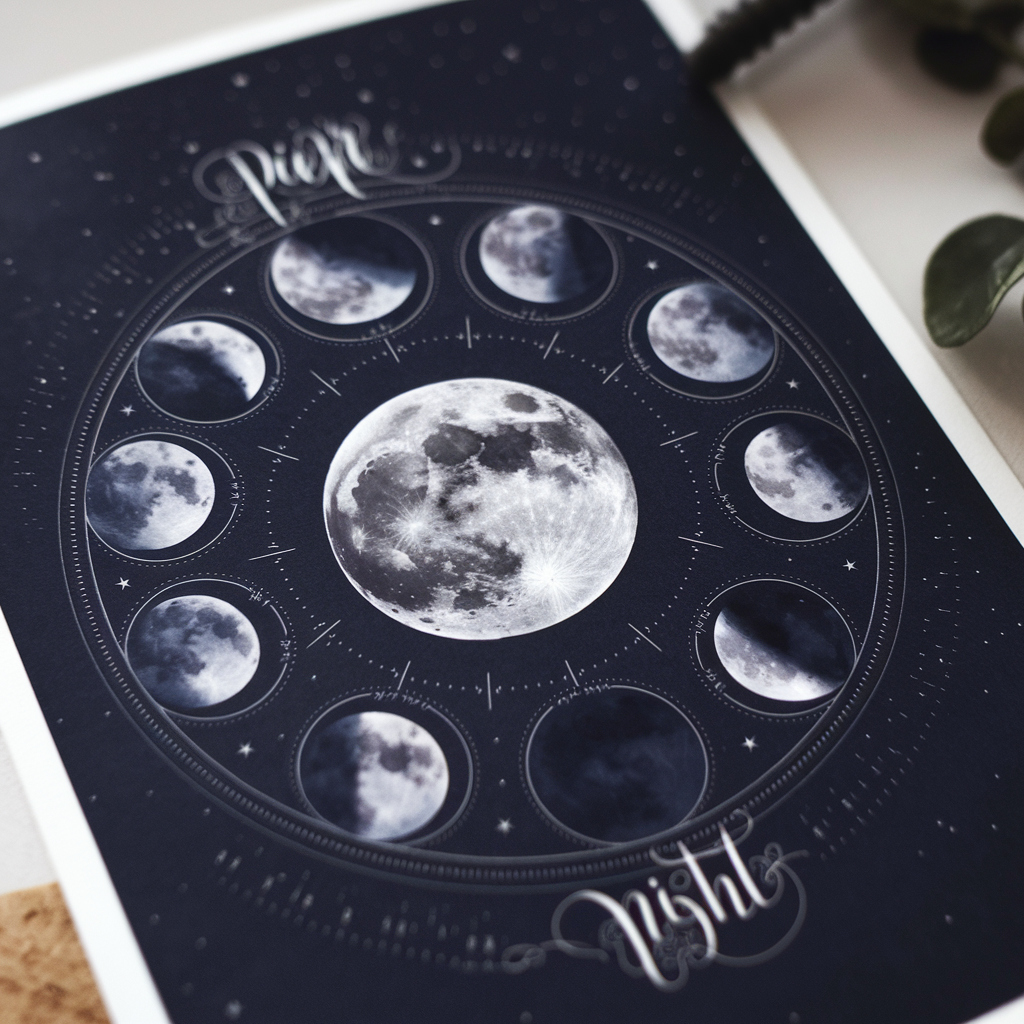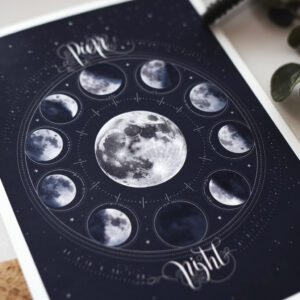In today's world, dominated by the precise Gregorian calendar, it is easy to forget that for centuries mankind measured time based on the cycles of the moon. Lunar calendars, also known as lunar calendars, played a key role in the life of communities, setting the rhythm of religious rituals, agricultural work and daily activities. Although today they have given way to solar calendars, their history and principles continue to fascinate.
The moon and its phases: The basics of the lunar calendar
Lunar calendars are based on the cycle of the moon's phases, or the time that elapses from one new moon to the next. This period, called a synodic month, lasts about 29.5 days. A lunar year consists of 12 such months, making a total of about 354 days. This is 11 days shorter than the solar year, which is the time the Earth orbits the sun.
This difference posed a challenge to the creators of lunar calendars. To reconcile the lunar cycle with the seasons, additional days were necessary. The Sumerians, pioneers in the field of time measurement, periodically added so-called intercalary months to synchronize the calendar with the vegetation cycle. Over time, more precise methods were developed, such as the Metonic cycle, which provided for the addition of 7 leap months over 19 years.

Lunar calendars in different cultures
Although solar calendars dominate the world today, lunar calendars still play an important role in some cultures and religions.
Jewish Calendar: More than 3,700 years old, it is one of the oldest lunar calendars. The Jewish year begins in autumn and consists of 12 months, alternating 30 and 29 days. Every 19 years, an additional month is added to synchronize the calendar with the solar year.
Islamic calendar: Also known as the Hijra calendar, it counts the time from the Prophet Muhammad's migration from Mecca to Medina in 622 AD. It consists of 12 lunar months and is not synchronized with the seasons. Muslim religious holidays, such as Ramadan and Id al-Adha, are set according to this calendar.
Chinese Calendar: This is an example of a lunar-solar calendar, combining elements of both systems. The months are based on the phases of the moon, but the year is synchronized with the solar year by adding additional months.
Differences between the lunar and solar calendars
The main difference between the lunar and solar calendars is the reference point. The lunar calendar is based on the cycle of the moon's phases, while the solar calendar is based on the timing of the Earth's rotation around the sun. In practice, this means that the lunar year is shorter than the solar year by about 11 days.
Lunar calendars use various methods of intercalation, or adding extra days or months, to keep in sync with the seasons. In solar calendars, such as the Gregorian, a leap day is added every four years.
Summary
Lunar calendars, although less popular today, are an important part of humanity's cultural heritage. They are a testament to the fascination with the moon and its influence on life on Earth. Although they have given way to precise solar calendars, they still serve an important function in some cultures and religions, marking the rhythm of holidays and rituals.
Great article 🙂 I never realized how much the Moon influenced people's lives in the past.
Indeed, it's interesting how different cultures measured time based on the cycles of the moon. The article says that the Sumerians added "intercalary months." I wonder how they calculated when to add such a month?
@Zorka, @Whisper You are right, the determination of intercalary months required accurate knowledge of the cycles of the Moon and Sun. The Sumerians were pioneers in the field of astronomy and had extensive knowledge of the subject. The Metonic cycle you mentioned was a later invention, but also based on careful observations of the sky.
It's interesting how people in ancient times were able to measure time so precisely without modern instruments. Their knowledge of the movements of celestial bodies was truly impressive.
And have you wondered how the introduction of the Gregorian calendar has affected our perception of time? Have we moved away from the natural rhythms of nature?
AND there I prefer our normal calendar. It's simple and easy to use. I can't imagine adding some extra months every now and then.
Lunar calendars are an important part of humanity's cultural heritage. They are a testament to the fascination of the Moon and its influence on life on Earth.
W artykule jest też wzmianka o kalendarzu chińskim, który łączy elementy kalendarza księżycowego i słonecznego. To pokazuje, że można połączyć tradycję z precyzją.


